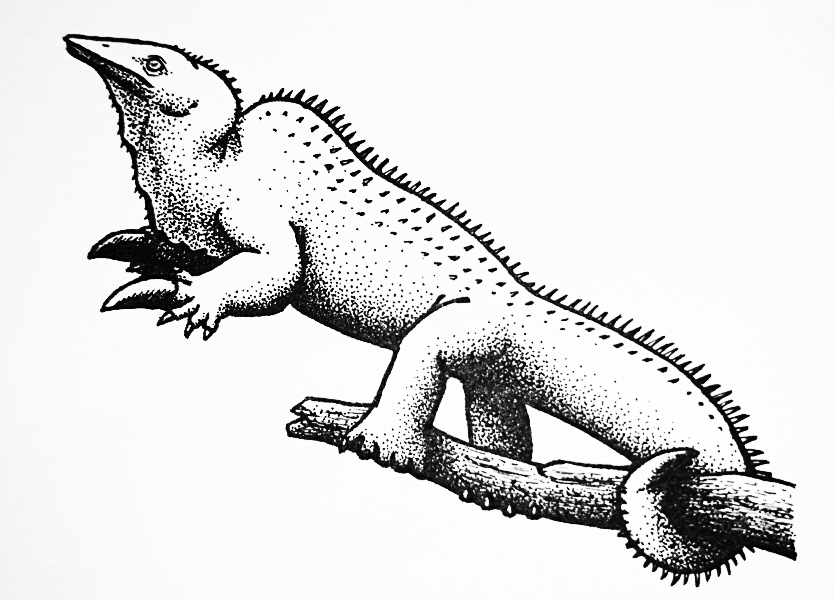One of my favorite palaeontological discoveries of 2016 also involved one of my favorite extinct animals: the odd little “monkey lizard” Drepanosaurus.
Living during the Late Triassic of Europe and North America (~218-212 mya), this reptile measured about 50cm long (20″). It was already known to have some particularly weird anatomy, featuring a humped back, grasping feet, a prehensile tail ending in vertebrae modified into a pseudo-claw, enormous claws on the second finger on each hand, and a bizarre arrangement of its forearm bones.
In 2016, new fossils gave us a better look at those arm bones, and they turned out to be even stranger than previously thought. As well as the radius and ulna being unusual, several wrist bones were also heavily modified and elongated, creating an arm setup unique among all known tetrapods. This may have been a specialization for “hook-and-pull” digging, ripping up tree bark to get at burrowing insects – but now the real mystery is why no other tetrapods have ever managed to modify their limb bones to this sort of extreme.

